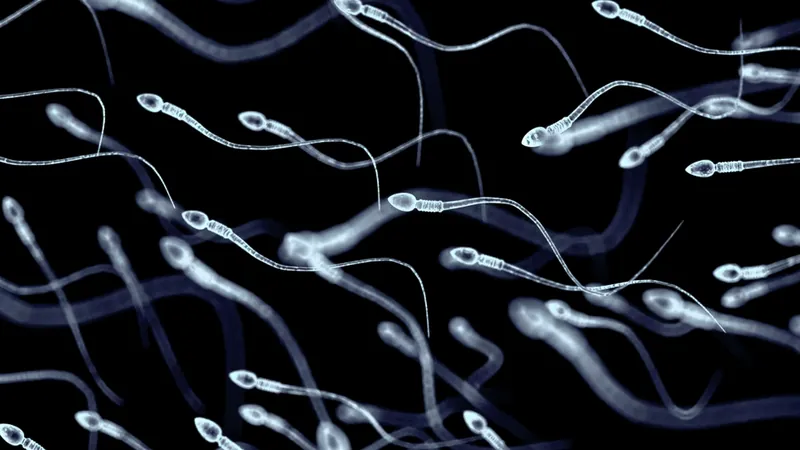
Unveiling the Secrets: How Long Can Human Sperm Really Survive?
2025-05-25
Author: Jacques
The Journey of Sperm: A Timed Expedition
Human sperm cells embark on an incredible journey from their genesis in the testes to finding their way through the complex female reproductive system. But how long do these microscopic travelers actually have before their time runs out?
The Stopwatch Starts
Survival times can vary widely, hinging on the environment they find themselves in. From the testes, sperm make their way through a twisted channel known as the epididymis, where they can stay for up to ten days before reaching a sanctuary, waiting for ejaculation.
In this protective niche, sperm can remain viable for about two weeks, according to Brett Nixon, a researcher from the University of Newcastle, Australia. However, once they exit that bubble, their fate changes dramatically.
Reality Outside the Body
Contrary to the myth that sperm die upon contact with oxygen, the real enemy is dryness. In the absence of moisture, sperm dramatically lose their vitality, with lifespans shrinking to mere minutes or hours. Yet, under ideal lab conditions—like during in vitro fertilization—sperm can survive up to 72 hours.
The Long Game Inside the Female Body
Inside the female reproductive tract, sperm can enjoy a surprisingly long lifespan. While it’s rare, some studies suggest that sperm may survive until the next menstrual cycle, potentially up to 28 days. However, most experts agree that a more realistic timeframe is around seven days. This is supported by the fact that a person can still conceive if they have intercourse a week before ovulation.
The Science of Survival
What factors contribute to this longevity? Many elements are at play. The seminal plasma that carries sperm is rich in nutrients and proteins, giving the sperm the energy they need for their journey. Sperm can also adapt their energy usage to survive longer periods.
Additionally, the female reproductive system provides energy sources, like glucose, essential for sperm survival. Although sperm come with their own energy reserves, these are short-lived.
Rest Stop: Oviducts
The journey isn’t a sprint; it’s more like a relay race with key rest stops. Research suggests sperm slow down and attach themselves to cells in areas like the lower fallopian tube, taking refuge until they’re ready for the final sprint to the egg.
Reproductive Advantage: Timing is Everything
Having sperm that can survive longer is advantageous. It increases the chance of a successful fertilization since sperm lingering in the reproductive tract can time their arrival with ovulation—a crucial moment when an egg is released.
Not Just a Human Tale
Interestingly, human sperm aren’t alone in their endurance. Certain bat species can keep sperm viable for up to six months, and some reptiles have been known to have sperm that lasts several years within their female counterparts. The mechanisms behind these astounding survival rates remain a captivating research mystery.
As scientists continue to unravel these enigmas, one thing becomes abundantly clear: the world of sperm survival is both fascinating and vital in the broader context of reproduction.









 Brasil (PT)
Brasil (PT)
 Canada (EN)
Canada (EN)
 Chile (ES)
Chile (ES)
 Česko (CS)
Česko (CS)
 대한민국 (KO)
대한민국 (KO)
 España (ES)
España (ES)
 France (FR)
France (FR)
 Hong Kong (EN)
Hong Kong (EN)
 Italia (IT)
Italia (IT)
 日本 (JA)
日本 (JA)
 Magyarország (HU)
Magyarország (HU)
 Norge (NO)
Norge (NO)
 Polska (PL)
Polska (PL)
 Schweiz (DE)
Schweiz (DE)
 Singapore (EN)
Singapore (EN)
 Sverige (SV)
Sverige (SV)
 Suomi (FI)
Suomi (FI)
 Türkiye (TR)
Türkiye (TR)
 الإمارات العربية المتحدة (AR)
الإمارات العربية المتحدة (AR)